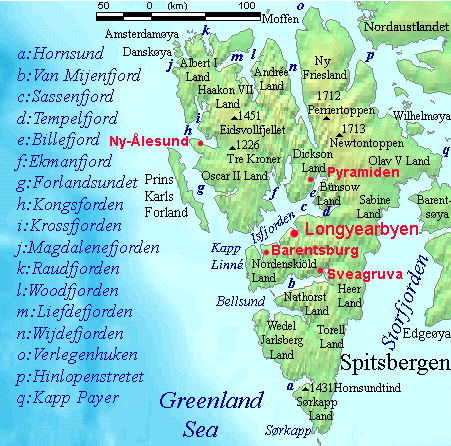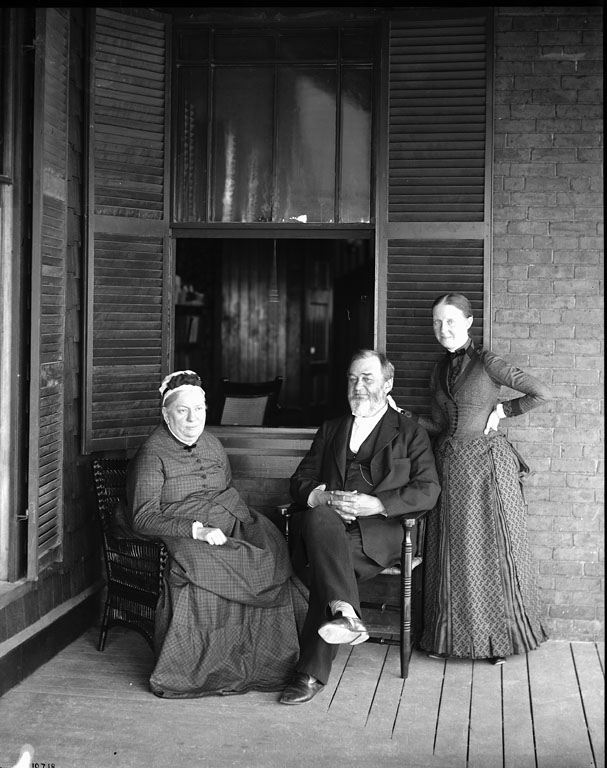|
Bairdfjellet
Bairdfjellet is a mountain in Sabine Land at Spitsbergen, Svalbard. It has a height of 857 m.a.s.l. and is situated between the glaciers of Hayesbreen and Fimbulisen/Rabotbreen. Name The mountain is named after American naturalist Spencer Fullerton Baird Spencer Fullerton Baird (; February 3, 1823 – August 19, 1887) was an American naturalist, ornithologist, ichthyologist, Herpetology, herpetologist, and museum curator. Baird was the first curator to be named at the Smithsonian Institution. He .... References Mountains of Spitsbergen {{Spitsbergen-mountain-stub ... [...More Info...] [...Related Items...] OR: [Wikipedia] [Google] [Baidu] |
Rabotbreen
Rabotbreen is a glacier in Sabine Land at Spitsbergen, Svalbard. The glacier is a tributary glacier to Fimbulisen, and is located in the upper part of Sassendalen. Nearby mountains are Bairdfjellet and Moskusryggen. Name The glacier is named after French geographer and Arctic explorer Charles Rabot Charles Rabot (26 June 1856 in Nevers − 1 February 1944 in Martigné-Ferchaud) was a French geographer, glaciologist, traveler, journalist, lecturer, translator, and explorer. He was also the first person to climb Kebnekaise, the tallest mounta .... References Glaciers of Spitsbergen {{Spitsbergen-glacier-stub ... [...More Info...] [...Related Items...] OR: [Wikipedia] [Google] [Baidu] |
Norway
Norway, officially the Kingdom of Norway, is a Nordic country in Northern Europe, the mainland territory of which comprises the western and northernmost portion of the Scandinavian Peninsula. The remote Arctic island of Jan Mayen and the archipelago of Svalbard also form part of Norway. Bouvet Island, located in the Subantarctic, is a dependency of Norway; it also lays claims to the Antarctic territories of Peter I Island and Queen Maud Land. The capital and largest city in Norway is Oslo. Norway has a total area of and had a population of 5,425,270 in January 2022. The country shares a long eastern border with Sweden at a length of . It is bordered by Finland and Russia to the northeast and the Skagerrak strait to the south, on the other side of which are Denmark and the United Kingdom. Norway has an extensive coastline, facing the North Atlantic Ocean and the Barents Sea. The maritime influence dominates Norway's climate, with mild lowland temperatures on the ... [...More Info...] [...Related Items...] OR: [Wikipedia] [Google] [Baidu] |
Svalbard
Svalbard ( , ), also known as Spitsbergen, or Spitzbergen, is a Norway, Norwegian archipelago in the Arctic Ocean. North of continental Europe, mainland Europe, it is about midway between the northern coast of Norway and the North Pole. The islands of the group range from 74th parallel north, 74° to 81st parallel north, 81° north latitude, and from 10th meridian east, 10° to 35th meridian east, 35° east longitude. The largest island is Spitsbergen, followed by Nordaustlandet and . The largest settlement is Longyearbyen. The islands were first used as a base by the Whaling, whalers who sailed far north in the 17th and 18th centuries, after which they were abandoned. Coal mining started at the beginning of the 20th century, and several permanent communities were established. The Svalbard Treaty of 1920 recognizes Norwegian sovereignty, and the 1925 Svalbard Act made Svalbard a full part of the Kingdom of Norway. They also established Svalbard as a free economic zone and a ... [...More Info...] [...Related Items...] OR: [Wikipedia] [Google] [Baidu] |
Sabine Land
Sabine Land ( ) is a land area on the east coast of Spitsbergen, Svalbard Svalbard ( , ), also known as Spitsbergen, or Spitzbergen, is a Norwegian archipelago in the Arctic Ocean. North of mainland Europe, it is about midway between the northern coast of Norway and the North Pole. The islands of the group range .... It is named after explorer General Sir Edward Sabine. Among the glaciers in the area is the Nordmannsfonna glacier. References Geography of Svalbard Spitsbergen {{Spitsbergen-geo-stub ... [...More Info...] [...Related Items...] OR: [Wikipedia] [Google] [Baidu] |
Spitsbergen
Spitsbergen (; formerly known as West Spitsbergen; Norwegian: ''Vest Spitsbergen'' or ''Vestspitsbergen'' , also sometimes spelled Spitzbergen) is the largest and the only permanently populated island of the Svalbard archipelago in northern Norway. Constituting the westernmost bulk of the archipelago, it borders the Arctic Ocean, the Norwegian Sea, and the Greenland Sea. Spitsbergen covers an area of , making it the largest island in Norway and the 36th-largest in the world. The administrative centre is Longyearbyen. Other settlements, in addition to research outposts, are the Russian mining community of Barentsburg, the research community of Ny-Ålesund, and the mining outpost of Sveagruva. Spitsbergen was covered in of ice in 1999, which was approximately 58.5% of the island's total area. The island was first used as a whaling base in the 17th and 18th centuries, after which it was abandoned. Coal mining started at the end of the 19th century, and several permanent com ... [...More Info...] [...Related Items...] OR: [Wikipedia] [Google] [Baidu] |
Hayesbreen
Hayesbreen is a glacier in Sabine Land at Spitsbergen, Svalbard. It is named after American politician and Arctic explorer Isaac Israel Hayes. The glacier has a length of about eighteen kilometers, and debouches into the bay of Mohnbukta. Surrounding mountains are Aagaardfjellet to the north, Jebensfjellet Jebensfjellet is a mountain in Sabine Land Sabine Land ( ) is a land area on the east coast of Spitsbergen, Svalbard. It is named after explorer General Sir Edward Sabine. Among the glaciers in the area is the Nordmannsfonna Nordmannsfonna is a ... to the south, and Panofskyfjellet where Hayesbreen joins the glacier of Königsbergbreen. References Glaciers of Spitsbergen {{Spitsbergen-glacier-stub ... [...More Info...] [...Related Items...] OR: [Wikipedia] [Google] [Baidu] |
Fimbulisen
Fimbulisen is a glaciated area in Sabine Land at Spitsbergen, Svalbard. It is located between Von Postbreen and Sassendalen Sassendalen is a valley at Spitsbergen, Svalbard. The valley is among the largest valleys of Svalbard, and continues westwards into Sassenfjorden. Part of the valley divides Sabine Land and Nordenskiöld Land Nordenskiöld Land is the land area ..., and covers an area of about 100 km2. References Glaciers of Spitsbergen {{Spitsbergen-glacier-stub ... [...More Info...] [...Related Items...] OR: [Wikipedia] [Google] [Baidu] |
Norwegian Polar Institute
The Norwegian Polar Institute (NPI; no, Norsk Polarinstitutt) is Norway's central governmental institution for scientific research, mapping and environmental monitoring in the Arctic and the Antarctic. The NPI is a directorate under Norway's Ministry of Climate and Environment. The institute advises Norwegian authorities on matters concerning polar environmental management and is the official environmental management body for Norwegian activities in Antarctica. Activities The institute's activities are focused on environmental research and management in the polar regions. The NPI's researchers investigate biodiversity, climate and environmental toxins in the Arctic and Antarctic, and in this context the institute equips and organizes large-scale expeditions to both polar regions. The institute contributes to national and international climate work, and is an active contact point for the international scientific community. The institute collects and analyses data on the environ ... [...More Info...] [...Related Items...] OR: [Wikipedia] [Google] [Baidu] |
Spencer Fullerton Baird
Spencer Fullerton Baird (; February 3, 1823 – August 19, 1887) was an American naturalist, ornithologist, ichthyologist, herpetologist, and museum curator. Baird was the first curator to be named at the Smithsonian Institution. He eventually served as assistant Secretary of the Smithsonian from 1850 to 1878, and as Secretary from 1878 until 1887. He was dedicated to expanding the natural history collections of the Smithsonian which he increased from 6,000 specimens in 1850 to over 2 million by the time of his death. He published over 1,000 works during his lifetime. Early life and education Spencer Fullerton Baird was born in Reading, Pennsylvania in 1823. His mother was a member of the prominent Philadelphia Biddle family; he was a nephew of Speaker of the Pennsylvania Senate Charles B. Penrose and a first cousin, once removed, of U.S. Senator Boies Penrose and his distinguished brothers, Richard, Spencer, and Charles. He became a self-trained naturalist as a young man, le ... [...More Info...] [...Related Items...] OR: [Wikipedia] [Google] [Baidu] |




